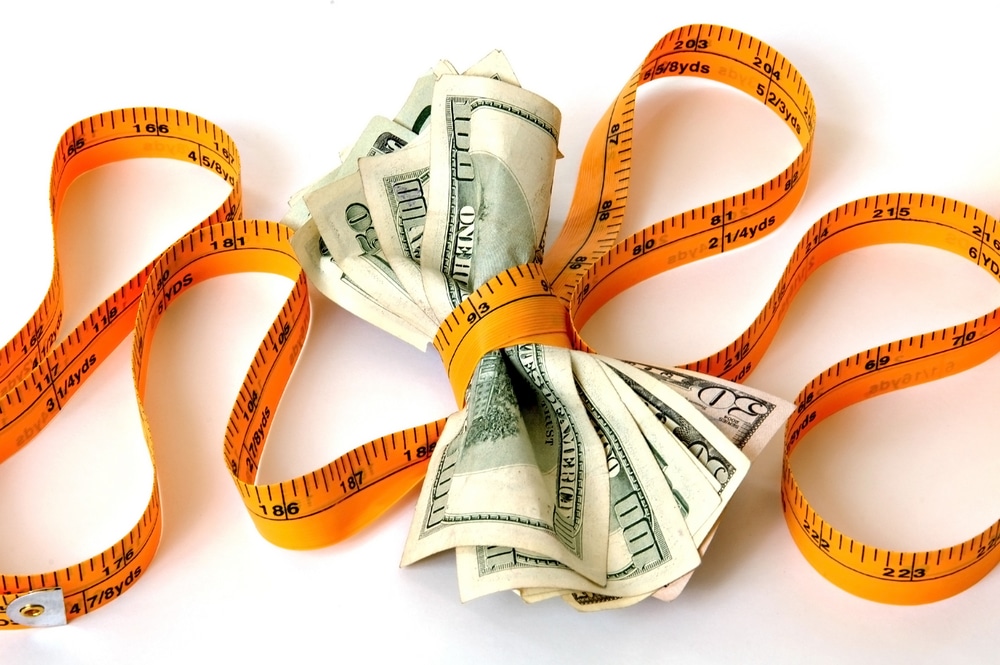Saving $1000 might feel like a daunting goal—especially when life keeps tossing unexpected expenses your way. But guess what? It’s not as hard as you think.
With a few small changes and a smart strategy, you can hit that magic number quicker than expected. Whether you’re building an emergency fund, saving for a dream vacation, or just trying to get ahead financially, this post will walk you through how to save $1000 fast—without feeling like you’re giving up all the fun stuff in life.
These practical tips are all about small actions that lead to big results. Let’s dive in.
How to Save $1000 Fast (Even If You’re Starting from Scratch)
You might be wondering if saving $1000 quickly is even possible—especially if you’re living paycheck to paycheck or don’t have much wiggle room. The good news? You don’t need a big income or drastic lifestyle changes to make it happen. Learning how to save $1000 fast is more about mindset, small daily choices, and creating a system that works for you.
It’s not about being perfect—it’s about being consistent. By combining smart budgeting, small cutbacks, and easy-to-implement habits, you’ll be surprised how quickly the savings start to build. Whether your timeline is one month or several, these steps will help you build momentum from day one.
Step 1: Track Your Spending (Know Where It Goes)
If you’ve ever thought, “Where does my money go every month?”, you’re not alone—and that question is exactly where your savings journey should begin. Tracking your spending is one of the most powerful tools for saving money because it exposes the habits and patterns you might not even be aware of. When you start paying attention to where every dollar goes, it becomes much easier to make intentional choices.
Whether you use a budgeting app like Mint or YNAB, jot things down in a notebook, or simply review your bank and credit card statements weekly, the result is the same: clarity. And once you see the little things—those $5 coffees, app subscriptions, and late-night takeout orders—you’ll realize just how much money is slipping through the cracks. The awareness alone can shift your mindset and free up cash almost instantly.
Step 2: Create a Budget That Works for You
Once you understand where your money is going, the next step is to give it purpose. That’s where budgeting comes in. A budget isn’t about restriction; it’s about direction. It helps you take control and use your money in a way that supports your goals. One of the simplest and most effective methods is the 50/30/20 rule—allocating 50 percent of your income toward needs, 30 percent toward wants, and 20 percent toward savings or debt.

But if your goal is to save $1000 fast, it might be time to temporarily tweak that balance. Shifting more of your income toward savings, even just for a couple of months, can make a huge difference. Whether you prefer using a spreadsheet, an app like EveryDollar, or the envelope method, the key is consistency. Once you start assigning a job to every dollar, your money will stop disappearing—and start working for you.
Step 3: Cut Back (Without Feeling Deprived)
This is where the real momentum begins. Cutting back doesn’t have to feel like punishment. It’s not about giving up everything you enjoy; it’s about being more mindful and intentional with your spending. Start by taking a closer look at your recurring expenses. Are you paying for subscriptions you barely use? Could you swap a few takeout meals for home-cooked dinners? Maybe it’s time to skip the $5 latte and brew coffee at home instead. These adjustments might seem small, but they add up quickly.
Even simple choices like using a grocery list to avoid impulse buys or waiting 48 hours before making non-essential purchases can significantly reduce your spending. Selling unused items around the house—old clothes, gadgets, or decor—can also give your savings a quick boost. Most importantly, remember that this phase doesn’t have to be permanent. Think of it as a short-term strategy with a big payoff. Once you reach your goal, you can choose which comforts to bring back into your budget—on your terms.
Step 4: Automate Your Savings
If saving feels like a chore, automation can make it effortless. Setting up an automatic transfer from your checking to your savings account is one of the easiest ways to build consistency. The beauty of automation is that it removes temptation and decision-making. When the money moves as soon as you get paid, it’s no longer sitting in your account, waiting to be spent. You won’t miss it, because you won’t see it.
Many banks offer scheduled transfers, and some apps even round up your purchases and save the spare change for you. Even small amounts add up over time—saving just $50 per week means you could hit your $1000 savings goal in just 20 weeks. Once it’s automated, you can essentially forget about it and let the process work in the background while you focus on everything else.
Stack Your Wins
One of the most effective ways to build momentum is to combine small strategies instead of relying on just one. For example, you might automate $25 a week into savings, cut $100 a month from food expenses, and sell a few unused items around the house. Individually, those efforts may seem modest—but together, they can get you to your $1000 goal in record time. Saving money becomes much more powerful when you layer habits that work together, creating a compounding effect that builds confidence along the way.
Step 5: Boost Your Income (Even a Little Helps)
While spending less is half the equation, earning a little more can speed things up dramatically. The good news is, you don’t need a second job or a massive time commitment to increase your income. Think about what you already have—skills, time, or unused stuff around the house. Freelancing, tutoring, or doing quick gigs online can bring in extra cash without disrupting your routine.

Selling items you no longer need—like clothes, electronics, or furniture—can add hundreds of dollars to your savings with minimal effort. Even flexible gig work like food delivery or pet sitting can be a great temporary solution. And if you have unused space, renting out a spare room or parking spot can become a simple form of passive income. Adding just $200 a month from side income puts you well on your way to hitting your $1000 goal in a matter of months, especially when paired with smarter budgeting and cutbacks.
Step 6: Use a 30-Day Savings Challenge
If you’re someone who thrives on structure or loves a good goal, a savings challenge can be a fun and motivating way to build momentum. There are plenty of options to try. A classic example is the $1-a-day challenge, where you save $1 on the first day, $2 on the second, and so on. By the end of the month, you’ll have saved nearly $500 without too much strain.
You can also try a no-spend challenge, where you commit to avoiding all non-essential purchases for 30 days, or a round-up challenge that puts spare change into savings every time you make a purchase. These challenges take something that might feel stressful—saving money—and turn it into a game. That element of fun can make all the difference when motivation dips, and seeing your progress daily can be a huge confidence booster.
Step 7: Stay Motivated and Track Progress
Saving $1000 fast is a short-term sprint, but staying consistent is what keeps the momentum going. One of the best ways to stay on track is to visualize your progress. Whether you’re using a simple jar, a printable tracker, or an app on your phone, seeing your savings grow makes the process feel real. Celebrate the small wins along the way—reaching $100, $500, or even just completing a full week of good habits.
And don’t underestimate the power of accountability. Sharing your goal with a partner, friend, or online community can give you that extra push on the days when you’re tempted to give in. Most importantly, keep your motivation front and center. Whether it’s the freedom of being debt-free, the excitement of an upcoming trip, or simply the peace of knowing you have an emergency cushion—reminding yourself of the “why” behind your goal can help carry you through.
Start Small, Dream Big
Reaching your $1,000 goal doesn’t happen overnight, but it doesn’t have to be overwhelming either. With small, intentional changes—like tracking your spending, budgeting smarter, cutting back where it counts, automating savings, and finding creative ways to earn extra income—you’ll be amazed at how quickly those dollars add up.
The best time to start? Right now.

No matter your financial situation, consistent action is what moves the needle. Saving $1,000 might just be the start of something even greater, whether that means building a fully stocked emergency fund, paying down debt, or finally taking that dream vacation.
Here’s to your financial success—one dollar at a time!
